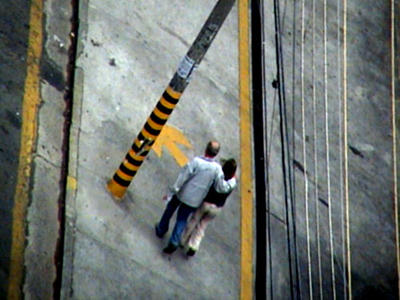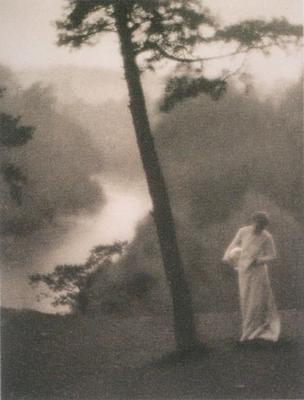
Thursday, August 25, 2005
Clarence H. White (1871-1925)
Clarence H. White, a native of West Carlisle, Ohio, was a founding member of Stieglitz's Photo-Secession in 1902, along with fellow Pictorialists Edward Steichen and Gertrude Käsebier. In 1907, White began teaching photography at Columbia Teacher's College at the invitation of Arthur Wesley Dow. In 1914, he opened the Clarence H. White School of Photography, New York, drawing such gifted teachers as Paul Anderson and Max Weber and teaching such early modernists as Laura Gilpin, Dorothea Lange, Margaret Bourke-White, Karl Struss, and Paul Outerbridge. After he died in 1925 while on a field trip to Mexico with his students, his wife and son continued the school until 1942.

Limitations of the Medium
"Photography. . . finds its raison d'être, like all media, in a complete uniqueness of means. . . The full potential power of every medium is dependent upon the purity of its use." —Camera Work, Numbers 49-50, June 1917
In the United States, the Clarence H. White School of Photography, as well as Alfred Stieglitz's 291 Gallery and his photographic quarterly Camera Work, helped to establish modern art and photography. While Pictorialists such as Stieglitz and White provided a conscious attention to the fine print related to other art media into the early twentieth century, early modern photographers worked within the limitations of the medium, creating finely crafted prints in the darkroom. These artists continued to further modern photography as an individual means of expression while establishing the tenets of modernism.

Mais fotos de Clarence H. White

Limitations of the Medium
"Photography. . . finds its raison d'être, like all media, in a complete uniqueness of means. . . The full potential power of every medium is dependent upon the purity of its use." —Camera Work, Numbers 49-50, June 1917
In the United States, the Clarence H. White School of Photography, as well as Alfred Stieglitz's 291 Gallery and his photographic quarterly Camera Work, helped to establish modern art and photography. While Pictorialists such as Stieglitz and White provided a conscious attention to the fine print related to other art media into the early twentieth century, early modern photographers worked within the limitations of the medium, creating finely crafted prints in the darkroom. These artists continued to further modern photography as an individual means of expression while establishing the tenets of modernism.

Mais fotos de Clarence H. White
Wednesday, August 24, 2005
Oscar Gustav Rejlander
Rejlander, Gustav Oscar (1813-1875)
Fotógrafo sueco. Recebeu formação para ser pintor.
Trabalhou na Inglaterra em 1853 como retratista e fotógrafo de comportamento.
Um expoente notável da revelação fracionada, sua fotografia mais famosa, "The two ways of life", foi feita em 1857 a partir de mais de 30 negativos. Compôs nus e outros estudos para servirem de modelos a artistas plásticos. Fez fotos que ilustraram "As expressões das emoções no homem e nos animais", de Charles Darwin, publicado em 1872.
Por M. Alinder, na Focal Encyclopedia of Photography

Mais fotos
*Recomendação da amiga Vax!
Fotógrafo sueco. Recebeu formação para ser pintor.
Trabalhou na Inglaterra em 1853 como retratista e fotógrafo de comportamento.
Um expoente notável da revelação fracionada, sua fotografia mais famosa, "The two ways of life", foi feita em 1857 a partir de mais de 30 negativos. Compôs nus e outros estudos para servirem de modelos a artistas plásticos. Fez fotos que ilustraram "As expressões das emoções no homem e nos animais", de Charles Darwin, publicado em 1872.
Por M. Alinder, na Focal Encyclopedia of Photography

Mais fotos
*Recomendação da amiga Vax!
Sunday, August 14, 2005
Subscribe to:
Posts (Atom)

